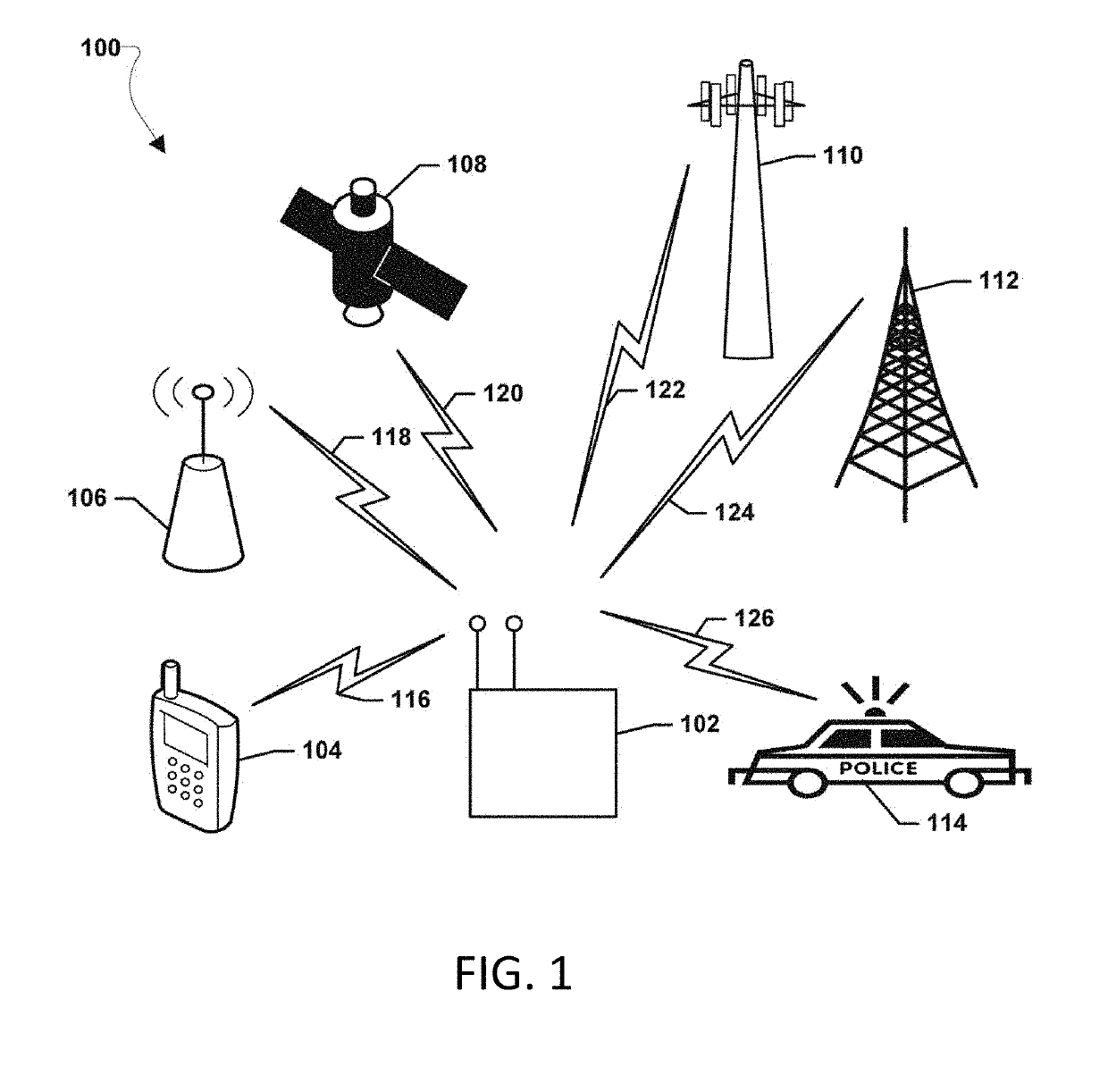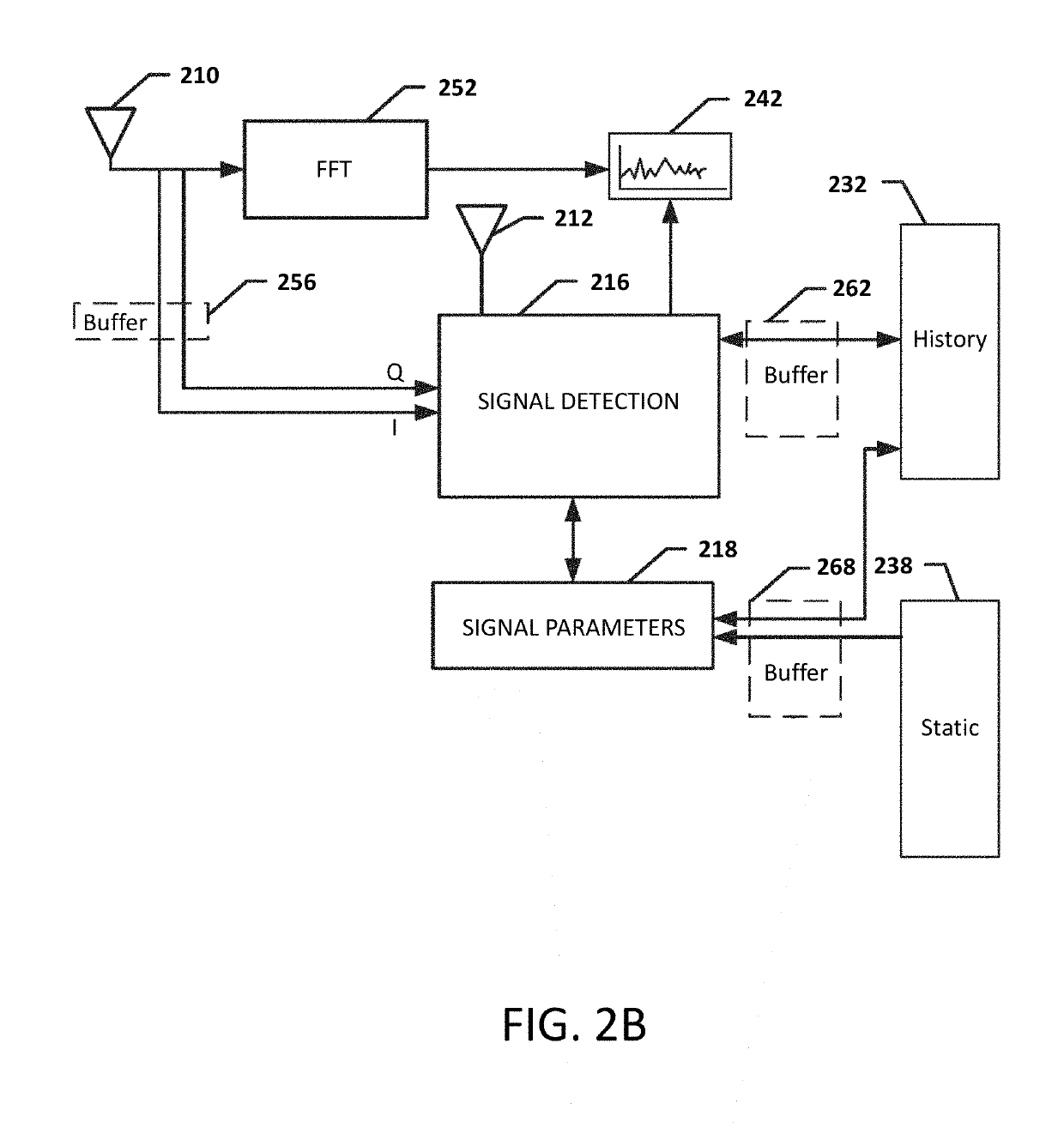Systems, methods, and devices for unmanned vehicle detection
a technology for unmanned vehicles and systems, applied in television systems, instruments, image enhancement, etc., can solve the problems of increasing spectrum needs, difficult to obtain effective spectrum management, and complicated changes in software and hardware for narrowly tailored devices
- Summary
- Abstract
- Description
- Claims
- Application Information
AI Technical Summary
Benefits of technology
Problems solved by technology
Method used
Image
Examples
Embodiment Construction
[0129]Related US patents and patent applications include U.S. application Ser. No. 15 / 357,157, U.S. Pat. Nos. 9,537,586, 9,185,591, 8,977,212, 8,798,548, 8,805,291, 8,780,968, 8,824,536, 9,288,683, 9,078,162, U.S. application Ser. No. 13 / 913,013, and U.S. Application No. 61 / 789,758. All of them are incorporated herein by reference in their entirety.
[0130]The present invention addresses the longstanding, unmet needs existing in the prior art and commercial sectors to provide solutions to the at least four major problems existing before the present invention, each one that requires near real time results on a continuous scanning of the target environment for the spectrum.
[0131]The present invention relates to systems, methods, and devices of the various embodiments enable spectrum management by identifying, classifying, and cataloging signals of interest based on radio frequency measurements. Furthermore, present invention relates to spectrum analysis and management for radio frequenc...
PUM
 Login to View More
Login to View More Abstract
Description
Claims
Application Information
 Login to View More
Login to View More - R&D
- Intellectual Property
- Life Sciences
- Materials
- Tech Scout
- Unparalleled Data Quality
- Higher Quality Content
- 60% Fewer Hallucinations
Browse by: Latest US Patents, China's latest patents, Technical Efficacy Thesaurus, Application Domain, Technology Topic, Popular Technical Reports.
© 2025 PatSnap. All rights reserved.Legal|Privacy policy|Modern Slavery Act Transparency Statement|Sitemap|About US| Contact US: help@patsnap.com



